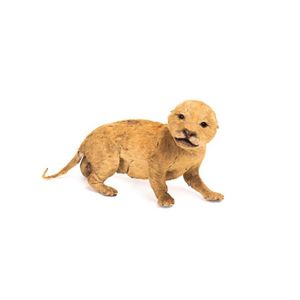1865 London Sterling Silver Tea Set with Floral Decorations
You must be a subscriber, and be logged in to view price and dealer details.
Subscribe Now to view actual auction price for this item
When you subscribe, you have the option of setting the currency in which to display prices to $Au, $US, $NZ or Stg.
- Sterling Silver - Sterling silver is a mixture of 92.5% pure silver and 7.5% of another metal, usually copper. Fine silver is 99.9% pure silver, and is relatively soft and the addition of the very small amount of copper gives the metal enough strength and hardness to be worked into jewellery, decorative and household objects.
- Hallmarks - A mark stamped on articles of precious metals in Britain, since the 14th century, certifying their purity. It derives its name from the Guild Hall of the Goldsmiths' Company, who recieved its Charter in 1327 giving it the power to assay (test the purity) and mark articles of gold and silver.
The hallmark will consist of several marks, including the:
- silver standard mark, indicating the purity of the metal. Sterling silver is .925 pure silver.
- the city mark indicating the city in which it was assayed eg London, Birmingham, York etc.
- the date mark, usually a letter of the alphabet in a particular font and case,
- a duty mark, indicating whether duty had been paid to the crown, and only in use from 1784 to 1890
The piece may include an additional mark, the maker's mark, although not forming part of the hallmark, will be located in the vicinity of the hallmarks.
Sometimes silver plated items will bear faux hallmarks, often confusing those not familiar with silver markings. - George Iv - George IV (1762 ? 1830) was king of the United Kingdom of Great Britain and Ireland and king of Hanover from 1820, until his own death in 1830. From 1811 until his accession in 1820, he served as Prince Regent during his father's final mental illness.
In English furniture design, his reign from 1811 to 1830 is known as the Regency period.
This item has been included into following indexes:
- tea sets/services
Visually similar items

George II sterling silver toddy ladle, turned pear wood handle London 1735

A taxidermy unborn lion cub, late 19th century, 16 cm high, 30 cm long,

A Rolex Oyster Perpetual Datejust diamond wristwatch, automatic movement, circular blue dial with after market diamond numerals, date aperture at three, sweep seconds hand, signed case, dial and movement, gold and stainless steel case with conforming brace

A French Art Noveau gilded silver mounted claret jug, Paris, circa 1890, possibly Baccarat and Roussel Eugene Doutre, the frosted glass carved in low relief with flowering braches picket out in gilt, unmarked, 33 cm high
